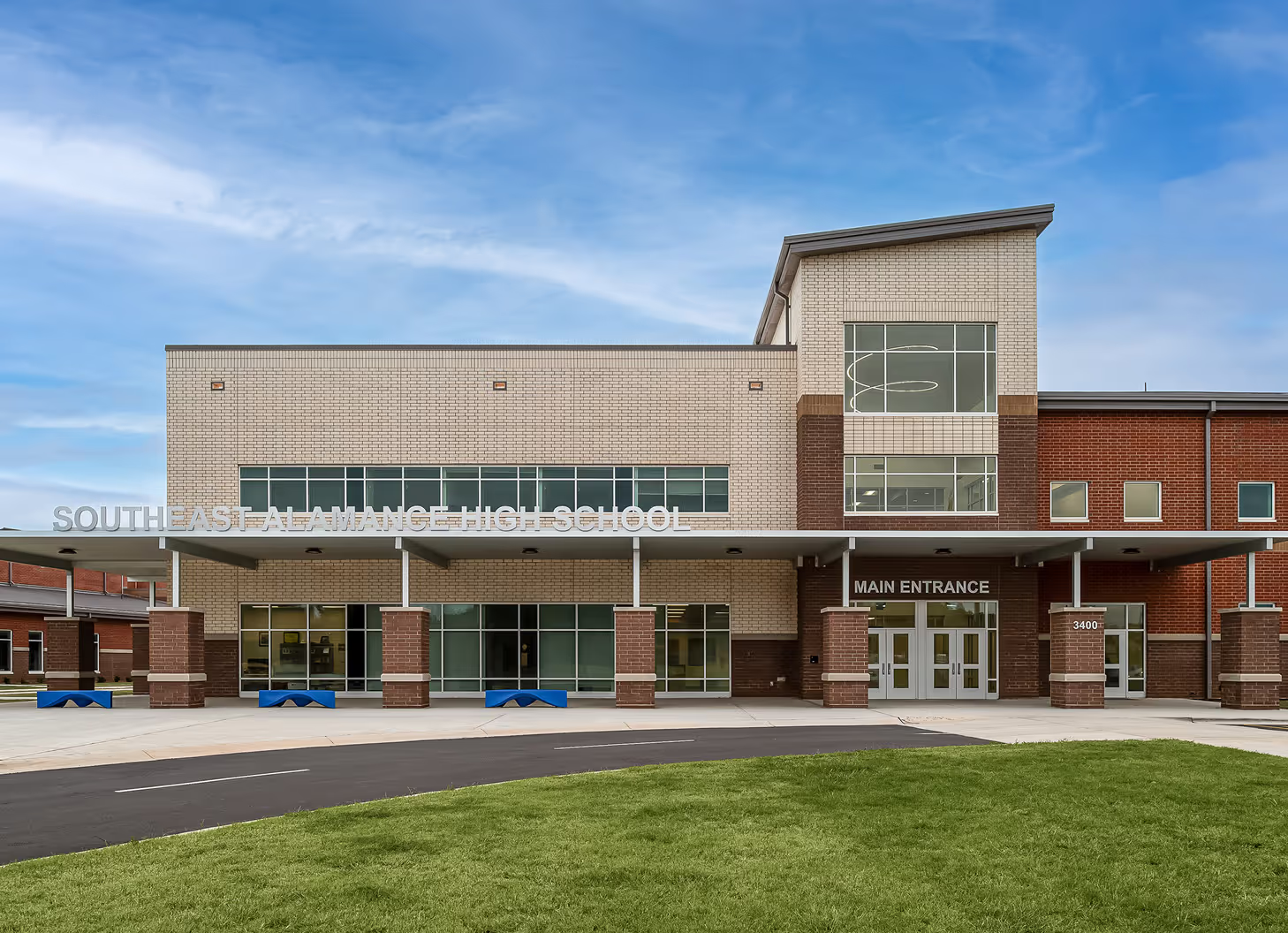
Gainesville High School
When Prince William County Public Schools (PWCPS) needed a 13th high school to serve 2,500 students, replicating their standard design would not suffice. The solution lay in precise modifications to Moseley's established prototype—changes that preserved the original design's strengths while introducing practical improvements for teaching and learning.
Building for Growth
To accommodate rising enrollment, architects added vertical space instead of expanding the footprint. A second-story academic wing, positioned above career and technical education spaces, increased capacity while preserving the site plan. The design replaced the prototype's oval roof lines with rectangular forms featuring oval drops, maintaining visual consistency across district campuses while reducing construction time.
This vertical addition enabled a new approach to natural light. Two courtyards direct sunlight into interior spaces, ensuring each classroom has exterior windows. This design choice reduces electrical usage while supporting student alertness and engagement throughout the day.
Connected Learning Spaces
The media center blends quiet study rooms with casual discussion areas that mirror neighborhood cafes. Students move easily between concentrated individual work and group projects.
This adaptability extends throughout the building. Academic wing corridors double as learning zones with movable furniture and integrated technology. Monitors support digital collaboration, while glass walls allow teachers to observe group activities. The design maintains clear sight lines while preserving student autonomy.
Adaptable Multipurpose Areas
Two student commons create gathering places near the gymnasium and auditorium, supporting efficient movement during both school hours and events. The auditorium demonstrates versatility through overhead partitions that create two lecture halls accommodating 100 people each. These spaces include retractable seating and dedicated entrances, allowing simultaneous activities.
The building benefits its broader community through varied spaces. The three-court gymnasium hosts regional tournaments, while career and technical education facilities support hands-on learning. By combining district standards with current teaching methods, the design provides value for students, teachers, and community members.
Engineering and Safety Integration
High-performance chilled beam systems regulate temperature while reducing energy consumption. Combined with the natural lighting design, these systems helped Gainesville High School achieve the Designed to Earn Energy Star rating, indicating superior energy performance.
The entry vestibule manages access effectively, complemented by open views across both floors. Administrative offices and shared spaces at major intersections permit supervision without creating institutional barriers.
From abundant natural light to adaptable learning areas, Gainesville High School shows how physical spaces enhance education. This refinement of a proven prototype addresses enrollment needs while supporting engaged learning.





























